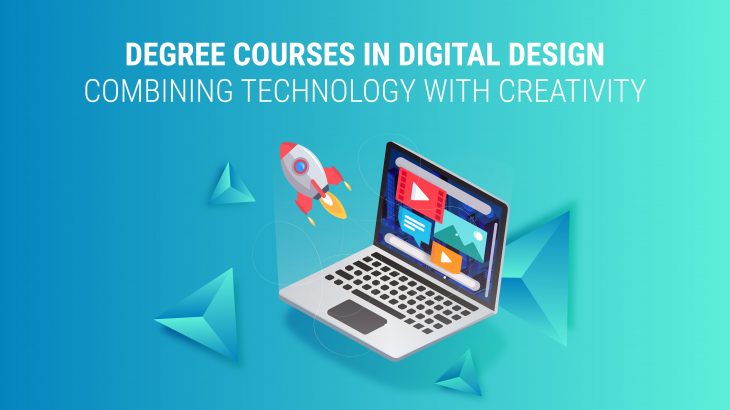Careers in the main designing field have been getting popular for the last few years, mainly in the digital space. Working on a post of designer might seem like a relaxed and wonderfully idyllic career option. Students have pure freedom to showcase their creativity but this kind of designing path requires a lot of hard work.
Now how about combining Technology with creativity?
In today’s time, there is no denying that the era belongs to science, art, and technology. Innovations and inventions route from each other, and technology and creativity do coexist in areas of art where the motivation for technological advancement is the creation of the human mind.
When we talk of the general creative ability of the human mind, things aren’t this unidirectional and simple. While people look at the side of development and design, human creativity has been brought and been employed by technology to enhance itself and connect to its users. On the other hand, it seems like the appropriate actions of the human brain have become rather unnecessary in the plural form of labor-intensive areas in our day-to-day lives, that is technology has replaced natural intellect.
Let’s explore the first side of the coin where technology enhances creativity and vice versa, both getting benefits from each other as two parties in an inter-related.
Converting knowledge to Information:
Technology now helps us convert knowledge to information. When thousands of people come together to share knowledge on a common global platform, it becomes quite easy to combine these factual data with ideas in your brain just to create new innovations.
Creativity is advanced in a collaborative manner.
“Creative” Technology:
Perhaps the most popular example of creativity in technology is in the area of Artificial Intelligence, Web Designing, Graphic Designing, Animation, etc. The applications branching out are some of the most advanced but also at the same time dynamic scenarios and technologies.
For example: in Web designing, the designers use their creative ability and technical skills to build and design aesthetically pleasing landing pages, blogs, templates, etc. Web designers also need to have a good understanding of technology and creativity.
Tech-based Education:
It is not a one-way road where creativity leads to better innovation and technology. When technology is made approachable and sustainable, it takes an indirect route to promote creativity as well. From textbook-based education, we have moved forward to smart classes, digital storytelling, and a variety of unique techniques to engage students’ interests.
Rise of the “creative class”:
At the end of the day, the technological breakthrough has resulted in a much more adaptive, open-minded, creative, and culturally diverse society. The newer generations of the remote world cultural groups see themselves represented on the global stage with other ‘more advanced’ groups that would not grow up with the same complexes with which the generation prior to them did. The internet has indeed bought the world closer, creating international citizens that both respect and learn from all the knowledge that surrounds them.
CAN TECHNOLOGY REPLACE HUMAN CREATIVITY?
No. Sometimes people would be stretching the line too far, as users do want machines to understand their behavior and patterns. Humans are preparing themselves for machines to understand as much as they want them to understand. There can be quite a chance of work profiles being replaced by machines in the very near future. Well, what has been separating as well as balancing the world of humans and machines is that machines are way beyond what humans are capable of doing. Humans sometimes become clueless about the concepts of “effect” and “cause”. Therefore, Technology seems to be only making it easier.
Conclusion:
While technology has expanded beyond lives in the best possible way, technology still needs creativity done by humans; and machines still need human assistance to function in an organic manner. Human thinking, rationality, and creativity are what prevent technology from going haywire, and in today’s world, they seem to be balancing each other.
The ARCH College of Design & Business offers all the courses required to enhance students’ creativity by taking technology hand in hand because creativity without technology and technology without creativity wouldn’t go a long way.
